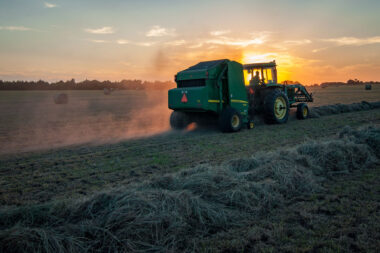Crop insurance plays a crucial role in mitigating financial risks for farmers by providing compensation for yield losses caused by natural disasters, pests, diseases, and adverse weather conditions. Traditional methods of assessing crop damage and determining insurance payouts often rely on manual surveys, historical data, and subjective assessments, leading to delays, inaccuracies, and disputes. In recent years, the integration of remote sensing technologies, such as satellite imagery and aerial surveys, has revolutionized the crop insurance industry, enabling timely and accurate estimation of yield losses and improving risk management for farmers and insurers alike.
Understanding Remote Sensing in Crop Insurance
Remote sensing technologies have become indispensable tools in modern crop insurance, offering a wealth of data and insights that revolutionize risk assessment, yield estimation, and damage evaluation. Let’s delve deeper into the components and applications of remote sensing in the context of crop insurance:
Satellite Imagery Applications:
Vegetation Monitoring: Satellite imagery captures detailed information about crop health, growth stages, and vegetation vigor using spectral bands sensitive to chlorophyll content and photosynthetic activity. This data aids insurers in assessing overall crop conditions, detecting anomalies, and monitoring changes over time.
Yield Estimation: By analyzing satellite-derived vegetation indices like NDVI (Normalized Difference Vegetation Index) and EVI (Enhanced Vegetation Index), insurers can estimate crop yields, predict potential losses, and adjust insurance coverage accordingly. High resolution satellite imagery enables field level yield assessments, improving accuracy in payout calculations.
Damage Assessment: Following natural disasters or weather events, satellite imagery provides before-and-after comparisons of crop fields, identifying areas of damage, stress, or loss. Insurers use this data to quantify damage severity, validate claims, and expedite compensation to affected farmers.
Aerial Survey Applications:
Localized Damage Assessment: Drones equipped with high resolution cameras and sensors offer precise, localized assessments of crop damage due to pests, diseases, hailstorms, or flooding. Aerial surveys capture detailed imagery of individual fields, enabling insurers to evaluate damage extent, determine causative factors, and assess insurance claims with accuracy.
Risk Zoning and Mapping: Aerial surveys provide spatially explicit data for risk zoning and mapping, identifying vulnerable areas, high risk zones, and crop stress hotspots. Insurers use this information to customize insurance products, adjust premiums, and implement risk mitigation strategies tailored to specific geographic regions and crop types.
Remote Sensing Indices and Analytics:
Vegetation Indices: In addition to NDVI and EVI, remote sensing indices like NDWI (Normalized Difference Water Index), NDRE (Normalized Difference Red Edge), and SAVI (Soil Adjusted Vegetation Index) offer insights into crop water stress, nutrient deficiencies, and physiological health. Insurers leverage these indices to assess crop resilience, predict yield variability, and evaluate insurance risk.
Machine Learning and Predictive Modeling: Advanced analytics, machine learning algorithms, and predictive modeling techniques applied to remote sensing data enhance risk assessment accuracy, claim prediction, and early warning systems. Predictive models integrate historical data, weather forecasts, satellite imagery, and agronomic variables to forecast yield losses, anticipate insurance claims, and optimize risk management strategies.
Integration with Weather Data and IoT Sensors:
Weather Correlation: Integrating remote sensing data with weather information (e.g., precipitation, temperature, humidity) enhances correlations between environmental factors and crop performance. Insurers use this integrated data to evaluate weather related risks, assess climate impacts, and develop weather indexed insurance products.
IoT Sensors and Field Observations: Remote sensing complements on ground observations from IoT sensors, weather stations, and field surveys, providing a comprehensive view of crop conditions, growth dynamics, and stress factors. Combining remote sensing with real time field data improves risk assessment precision, claims validation, and fraud detection in crop insurance.
Disaster Response and Resilience Planning:
Early Warning Systems: Remote sensing contributes to early warning systems for natural disasters (e.g., floods, droughts, storms), enabling proactive risk management, evacuation planning, and disaster preparedness measures. Insurers collaborate with governments, disaster response agencies, and farmers to leverage remote sensing data for rapid response and recovery efforts.
Resilience Planning: Long term monitoring of crop conditions, land use changes, and environmental trends using remote sensing supports resilience planning and adaptation strategies. Insurers incorporate resilience metrics, climate resilience indices, and risk mitigating practices into insurance policies, promoting sustainable agriculture and climate smart farming practices.
Software Components
Remote Sensing Data Processing Software:
ENVI/IDL: ENVI (Environment for Visualizing Images) and IDL (Interactive Data Language) are widely used software packages for processing and analyzing remote sensing data, including satellite imagery, aerial surveys, and spectral data. They offer tools for image preprocessing, atmospheric correction, spectral signature extraction, and data fusion.
ArcGIS: ArcGIS software suite provides geospatial analysis capabilities for integrating remote sensing data with GIS (Geographic Information System) layers, creating spatial databases, performing spatial queries, and generating thematic maps for crop risk assessment and insurance mapping.
Vegetation Index Calculation Tools:
QGIS: QGIS (Quantum GIS) is an open source GIS software that includes plugins and tools for calculating vegetation indices (e.g., NDVI, NDWI, NDRE) from remote sensing imagery. It allows users to visualize and analyze vegetation health, drought stress, and crop conditions based on spectral indices.
Erdas Imagine: Erdas Imagine software offers advanced tools for calculating vegetation indices, performing image classification, and conducting change detection analysis using multispectral and hyperspectral imagery. It supports data integration from various remote sensing platforms and sensors.
Machine Learning and Predictive Analytics Platforms:
Python with Libraries (NumPy, SciPy, scikit-learn): Python programming language, along with scientific computing libraries like NumPy and SciPy, and machine learning libraries such as scikit-learn, enables the development of predictive models, data analytics pipelines, and machine learning algorithms for crop yield prediction, risk modeling, and insurance claim estimation based on remote sensing data.
R Statistical Software: R is another powerful statistical software commonly used for data analysis, statistical modeling, and spatial analysis in crop insurance applications. R packages like raster, rgdal, and sp support remote sensing data processing, spatial interpolation, and geostatistical analysis.
Image Analysis and Object Detection Software:
eCognition: eCognition software by Trimble offers advanced image analysis and object-based classification tools for analyzing remote sensing imagery, detecting crop boundaries, identifying land cover types, and quantifying damage assessment at the field level.
OpenCV: OpenCV (Open Source Computer Vision Library) is used for image processing, object detection, and machine vision tasks in agricultural applications, including crop monitoring, pest detection, and anomaly identification from aerial imagery captured by drones.
Weather Data Integration and API Tools:
Weather APIs (e.g., OpenWeatherMap, WeatherAPI): Weather APIs provide access to real time weather data, historical climate records, and weather forecasts, which can be integrated into crop insurance software platforms for correlating weather events with crop performance, yield variability, and risk assessment.
Custom Software Development: Custom software solutions or APIs can be developed to integrate weather data APIs with remote sensing data processing tools, enabling automated weather indexed insurance products, parametric insurance triggers, and risk modeling based on weather-related variables.
GIS and Mapping Platforms:
Google Earth Engine: Google Earth Engine is a cloud-based platform for analyzing geospatial data, including satellite imagery, climate data, and land cover maps. It offers scalable computing resources, image processing algorithms, and geospatial visualization tools for crop monitoring, land use mapping, and environmental monitoring in crop insurance applications.
Mapbox: Mapbox provides interactive mapping tools, geospatial APIs, and SDKs for creating custom maps, spatial data visualizations, and location based applications. It can be integrated with remote sensing data to develop user friendly dashboards, risk maps, and geospatial analytics for crop insurance assessments.
Database Management Systems (DBMS):
MySQL, PostgreSQL: Relational database management systems like MySQL and PostgreSQL are used for storing, querying, and managing large volumes of geospatial data, remote sensing imagery, and insurance related datasets. They support spatial data types, geospatial queries, and data indexing for efficient data retrieval and analysis in crop insurance databases.
Cloud Computing and Data Storage Platforms:
Amazon Web Services (AWS), Microsoft Azure: Cloud computing platforms like AWS and Azure provide scalable computing resources, data storage solutions (e.g., Amazon S3, Azure Blob Storage), and serverless computing capabilities for processing, storing, and analyzing remote sensing data, AI driven analytics, and machine learning models in crop insurance applications.
Benefits of Remote Sensing in Crop Insurance
The adoption of remote sensing technologies in crop insurance offers a range of benefits for stakeholders involved in risk assessment, underwriting, claims processing, and policy management:
Timely Damage Assessment: Remote sensing enables rapid and objective assessment of crop damage following natural disasters (e.g., floods, droughts, hailstorms, hurricanes) or biotic factors (e.g., pests, diseases), reducing the time required for claims processing and ensuring timely payouts to affected farmers.
Accurate Yield Estimation: By analyzing spectral data, vegetation indices, and crop health indicators from remote sensing imagery, insurers can accurately estimate yield losses, quantify damage severity, and determine the extent of insurance coverage needed for compensation.
Spatial Coverage and Scalability: Remote sensing technologies provide spatially comprehensive coverage of agricultural regions, allowing insurers to assess large-scale crop damage across multiple fields, farms, or regions simultaneously, enhancing scalability and risk management capabilities.
Risk Monitoring and Early Warning: Continuous monitoring of crop conditions through satellite and aerial imagery enables early detection of potential risks, crop stressors, and emerging threats (e.g., pest outbreaks, drought conditions), allowing insurers to proactively manage risks, adjust premiums, and offer risk mitigation measures to farmers.
Data Driven Decision Making: Remote sensing data, combined with advanced analytics, machine learning algorithms, and geospatial modeling techniques, facilitates data driven decision making in crop insurance, improving risk assessment accuracy, claim validation, fraud detection, and policy customization based on real time crop conditions and performance metrics.
Case Studies and Success Stories
Several initiatives and case studies demonstrate the effectiveness of remote sensing in crop insurance assessments and risk management:
NASA Harvest: The NASA Harvest program utilizes satellite data, machine learning algorithms, and crop models to monitor global crop conditions, yield predictions, and food security challenges. Remote sensing technologies play a crucial role in assessing crop damage, yield variability, and climate impacts for crop insurance applications.
Index Based Insurance Programs: Index based insurance schemes, such as weather index insurance and yield index insurance, leverage remote sensing data and weather information to trigger insurance payouts based on predefined thresholds (e.g., rainfall levels, temperature extremes, vegetation indices). These programs improve insurance accessibility, reduce administrative costs, and enhance risk coverage for smallholder farmers in developing countries.
Agricultural Insurtech Startups: Insurtech startups and technology providers are leveraging remote sensing data, satellite imagery platforms (e.g., Sentinel Hub, Planet), and AI powered analytics to offer innovative crop insurance solutions. These solutions include parametric insurance products, crop monitoring services, risk modeling tools, and on demand insurance coverage tailored to farmers’ specific needs and risk profiles.
Challenges and Future Directions
While remote sensing has transformed crop insurance assessments, several challenges and opportunities lie ahead for further innovation and adoption:
Data Integration and Standardization: Integrating diverse data sources (satellite imagery, weather data, ground truthing) and harmonizing data formats, quality standards, and interoperability are key challenges for seamless integration of remote sensing into insurance workflows.
Accuracy and Validation: Ensuring the accuracy, reliability, and validation of remote sensing data, algorithms, and predictive models is crucial for reducing errors, false positives, and uncertainties in crop damage assessments and yield estimations.
Capacity Building and Training: Building capacity among insurers, farmers, and stakeholders in remote sensing technologies, data analytics, and geospatial tools is essential for enhancing awareness, adoption, and proficiency in utilizing remote sensing for crop insurance applications.
Ethical and Privacy Considerations: Addressing ethical concerns, data privacy, and regulatory compliance (e.g., GDPR, data sharing agreements) in handling remote sensing data, sensitive crop information, and personal data is paramount for maintaining trust, transparency, and ethical standards in crop insurance practices.
Innovations in Technology: Continued advancements in remote sensing technologies (e.g., hyperspectral imaging, drone swarms, AI-driven analytics), cloud computing platforms, and open data initiatives (e.g., Copernicus, Landsat) offer opportunities for developing innovative solutions, automated workflows, and real-time monitoring capabilities in crop insurance risk management.
Remote sensing technologies have revolutionized the landscape of crop insurance, enabling faster, more accurate, and data-driven assessments of crop damage, yield losses, and risk exposure for farmers and insurers. By harnessing the power of satellite imagery, aerial surveys, and advanced analytics, crop insurance programs can enhance risk mitigation strategies, improve resilience to climate variability, and support sustainable agricultural practices. The ongoing collaboration between technology providers, insurance companies, policymakers, and agricultural stakeholders is vital for leveraging remote sensing innovations, overcoming challenges, and unlocking the full potential of crop insurance in safeguarding farmers’ livelihoods and ensuring food security in a changing climate scenario.



